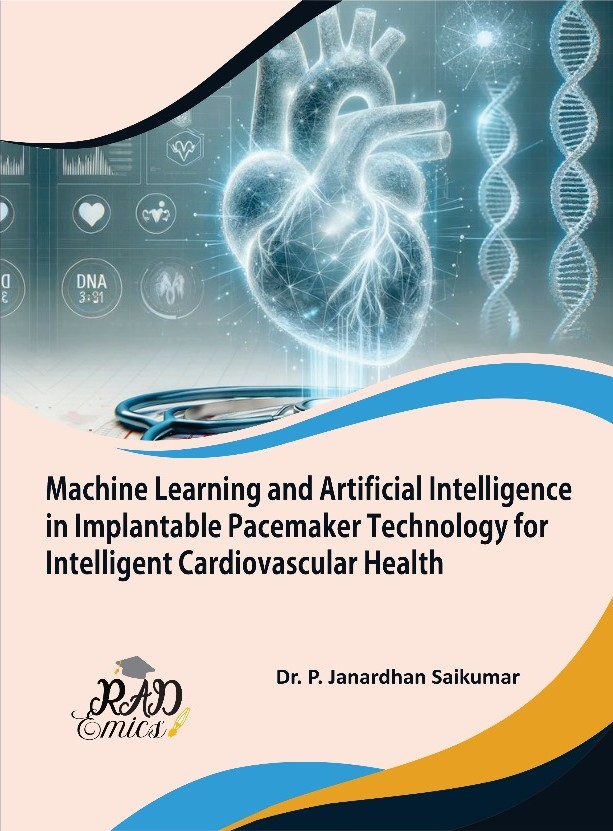
Peer Reviewed Chapter
Chapter Name : Cloud Assisted Machine Learning Platforms for Longitudinal Analysis of Cardiac Signals from Implantable Pacemakers
Author Name : Satwik Chatterjee, Achu Rajukutty
Copyright: ©2025 | Pages: 33
DOI: 10.71443/9789349552586-15
Received: WU Accepted: WU Published: WU
Abstract
Implantable pacemakers now function as continuous cardiac monitoring devices, generating detailed intracardiac signal streams that capture patient-specific rhythm patterns over extended periods. Cloud-assisted machine learning platforms offer a scalable approach to handle this complex, high-volume data for proactive, personalized care. By combining edge-device preprocessing, secure wireless transmission, and powerful cloud analytics, these systems detect arrhythmias, identify device malfunctions, and reveal subtle physiological trends that inform timely clinical interventions. Longitudinal analysis enables the creation of adaptive baselines for each patient, supporting therapy optimization and risk prediction tailored to evolving cardiac profiles. Clinician dashboards transform raw data into clear insights, while patient-reported outcomes enrich the machine learning context for more relevant predictions. Robust security measures, privacy-preserving computation, and regulatory compliance frameworks ensure safe deployment and maintain trust in these connected health ecosystems. Integration of predictive models into remote patient management workflows extends specialist oversight beyond traditional clinic visits, improving outcomes and resource efficiency. This chapter examines the architecture, data pipelines, machine learning methods, privacy strategies, and clinical impacts of cloud-enabled pacemaker monitoring, highlighting key research gaps and future directions to advance precision cardiology.
Introduction
Implantable pacemakers have progressed significantly from simple pulse generators to sophisticated devices capable of sensing, recording [1], and transmitting detailed intracardiac signals [2]. Modern pacemakers not only regulate heart rhythm but also generate continuous streams of physiological data that reflect the patient’s unique cardiac condition over time [3]. This wealth of information has tremendous potential to improve patient care, but realizing this potential requires robust systems that can capture, store [4], and interpret these signals far beyond the capabilities of traditional in-clinic device checks [5].
The shift toward remote cardiac monitoring reflects a broader trend in connected health technologies. Wireless telemetry and low-power communication protocols now enable pacemakers to transmit data securely to external gateways such as smartphones or dedicated home hubs [6]. These gateways bridge the gap between implantable devices and cloud infrastructure [7], creating pathways for continuous data flow [8]. The combination of on-device sensing and cloud-based computation makes it feasible [9] to monitor patients in real time while maintaining device longevity [10].
Machine learning models add critical value to this data-rich environment by transforming raw signals into clinically meaningful insights [11]. Time-series models, anomaly detectors, and predictive algorithms can detect early signs of arrhythmias [12], lead failures, or battery depletion long before they become symptomatic or visible during routine follow-ups [13]. This shift from reactive to proactive care aligns with the goals of precision medicine [14] and has the potential to reduce hospitalizations and improve patient quality of life [15].